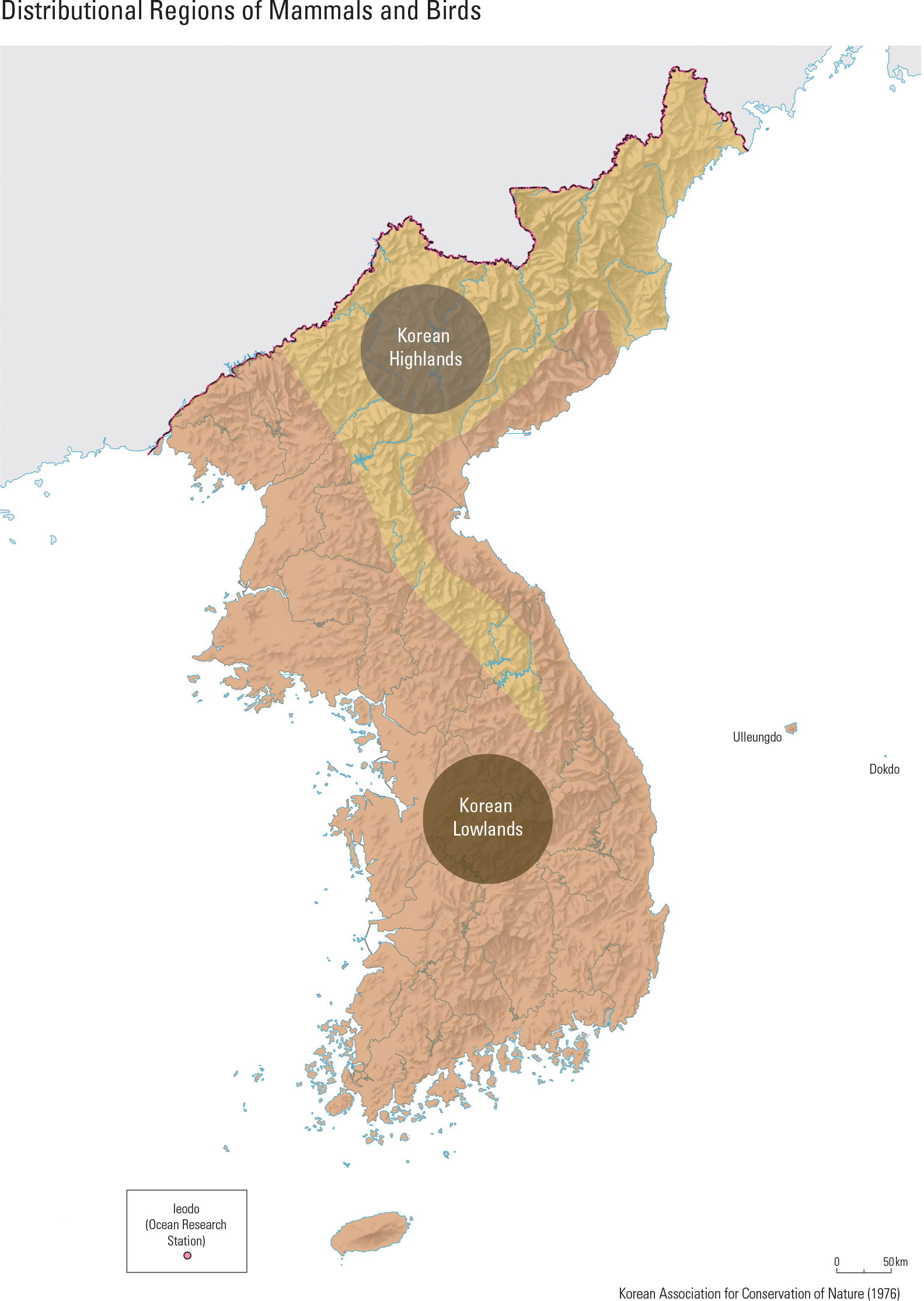English II
Geographical distribution of animals is deter- mined by habitat conditions in which landform, climate, hydrology, and vegetation are reflected. The Korean Peninsula is subdivided into the Ko- rean Highlands (Hanguk goji sogu) and Korean Lowlands (Hanguk jeoji sogu) in relation to dis- tributions of mammal and bird species, and vege- tation zones. In the Korean Highlands, the natural environment and landscapes are similar to those of the Ussuri region in Russia and the northeast- ern region of China. Mammals such as Crocidura lasiura, Ochotona hyperborea, Vespertilio muri- nus, Martes zibellina, Mustela nivalis mosanensis, and Cervus nippon hortulorum inhabit the Korean Highlands. Also, it is home to many bird species such as Lyrurus tetrix, Emberiza jankowskii, Pi- coides tridactylus, Surnia ulula, Dendrocopos minor, and Jynx torquilla. The Korean Lowlands include the western, central, and southern part of Korea where temper- ate forests and warm-temperate forests develop. Since there are less mountainous areas but more cultivated lands, animals that are typically found in piedmont-plains inhabit the areas. Mammalian species such as Myotis formosus, Hydropotes iner- mis, Lasiopodomys mandarinus, and Sus scrofa are found in the Korean Lowlands. Bird species such as Columba janthina, Microscelis amaurotis, and Zosterops japonicus are also found. Zoogeographic region of butter ies is subdivid- ed into four, based on their distribution and com- position (the ratio between the Palearctic species and the Oriental species). Oeneis urda, Clossiana angarensis, Euphydryas ichnea, and Albulina op- tilete are representative for the Palearctic species which were advanced south from the Amur region in Siberia. Species such as Seokia pratti, Nymph- alis io, and Aporia hippia that flew across the western China, Mongolia, and the southern Man- churia, and crossed the Amnokgang are typical of southern Chinese strains. Mimathyma schrenckii, Nymphalis antiopa, and Aldania thisbe are the Far East endemic species. Species migrated from Kyushu, Tsushima, and Ryukyu such as Junonia almana, Parantica sita, Eurema hecabe, and At- rophaneura alcinous are the Oriental species. Zoogeographical distribution of freshwater sh species is classi ed into the Eastnorth Korea Subdistrict, the South Korea Subdistrict, and the West Korea Subdistrict. Freshwater species such as Rhynchocypris semotilus, and Cobitis paci ca are endemic to the Eastnorth Korea Subdistrict. The Palearctic species such as Gobio cynoceph- alus, Phoxinus phoxinus, and Orthrias toni that are believed to have originated from the Amur river in the past are also found. Microphysogobio koreensis, Iksookimia longicorpa, and Niwaella multifasciata are found in the South Korea Sub- district. Palearctic species such as Rhynchocypris oxycephalus and Lefua costata, and species in common with Japan such as Oryzias latipes and Coreoperca kawamebari are also found in South Korea Subdistrict. Not only endemic species such as Hemibarbus mylodon, Pseudopungtungia nigra, Moroco kumgangensis, and Gobiobotia brevibarba, but also Palearctic species such as Ladislavia taczanowskii and Phoxinus phoxinus are found in the West Korea Subdistrict.
page_2 |


